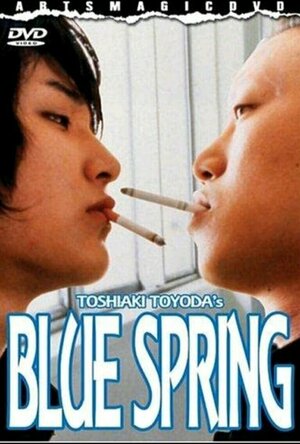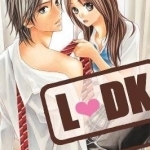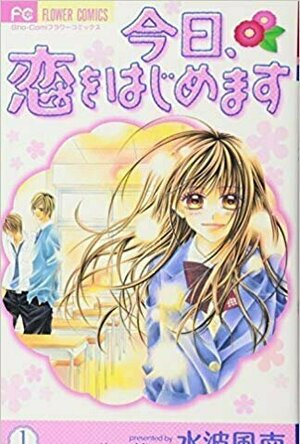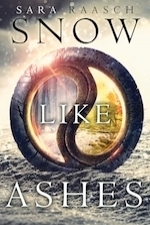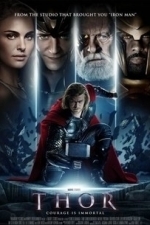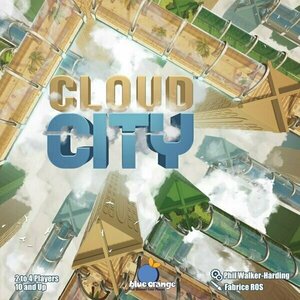Search
Search results
James Koppert (2698 KP) rated Blue Spring (2001) in Movies
Apr 21, 2020
The early naughties destructive Japan
There was a slew of angry rebellious nihilistic cinema in this period and Blue Spring may just be the most punk rock of them all. Its an artistic nasty little film full of violence and tension, as if art House got really pissed off and decided to say eff you. A seminal piece of cinema
Leanne Crabtree (480 KP) rated L-DK, Vol. 04 in Books
Jan 6, 2021
This is reminding me a lot of [b:アオハライド Ao Haru Ride 1|13571757|アオハライド Ao Haru Ride 1 (Blue Spring Ride, #1)|Io Sakisaka|https://d.gr-assets.com/books/1333286264s/13571757.jpg|19152133] in the will they, wont they/please get together already! way. I love it, but it's also driving me mad! They were so close to kissing at the end of this and then he has to be an arse...
Off to start Volume 5!
Off to start Volume 5!
Leanne Crabtree (480 KP) rated Kyou, Koi wo Hajimemasu Vol 01 (Kyou, Koi wo Hajimemasu, #1) in Books
Sep 6, 2019
I wasn't entirely drawn into this.
I didn't quite understand the whole cutting his hair thing and him deciding then to want to date her but at the same time I wouldn't mind continuing on for a few volumes to see where it goes.
I wasn't as into the artwork as well but maybe that's because it's only my second look at a manga comic after finishing off my lovely Blue Spring Ride series, which I loved.
Off to start volume 2.
I didn't quite understand the whole cutting his hair thing and him deciding then to want to date her but at the same time I wouldn't mind continuing on for a few volumes to see where it goes.
I wasn't as into the artwork as well but maybe that's because it's only my second look at a manga comic after finishing off my lovely Blue Spring Ride series, which I loved.
Off to start volume 2.
Leanne Crabtree (480 KP) rated Strobe Edge, Vol. 1 in Books
Sep 6, 2019
This is my second manga by this author and I really liked the other [b:?????? 1 Ao Haru Ride 1 |13571757|?????? 1 Ao Haru Ride 1 (Blue Spring Ride, #1)|Io Sakisaka|https://d.gr-assets.com/books/1333286264s/13571757.jpg|19152133].
One thing I have noticed is that the guy looks eerily similar to the guy from the other one. In fact, that something I've noticed having read a handful of different ones--a lot of the characters kinda look the same.
Anyway, I'm intrigued by this one. I want them to get together already but as always there are several obstacles in the way. Off to start Volume 2.
One thing I have noticed is that the guy looks eerily similar to the guy from the other one. In fact, that something I've noticed having read a handful of different ones--a lot of the characters kinda look the same.
Anyway, I'm intrigued by this one. I want them to get together already but as always there are several obstacles in the way. Off to start Volume 2.
Kirk Bage (1775 KP) rated Höstsonaten (Autumn Sonata) (1978) in Movies
Jan 28, 2021
I have been familiar with Bergman for a long time, having seen Summer With Monika, Wild Strawberries and The Seventh Seal at a young age. They were more or less my first experience of foreign language art cinema that I sort of understood and liked. Something about the practical and economical way conversations happen in Bergman appeals to me. They tend to lack melodrama and romance, but are intellectually satisfying and often dramatically devastating. None more so than this mindbendingly sad tale of a mother and daughter in conflict. Bergman’s regular muses Ingmar Bergman and Liv Ullmann go head to head in a masterclass of acting that left me in utter awe. It reminded me of the first time I saw Gena Rowlands in A Woman Under the Influence – such soul-wrenching honest of emotion, it is almost unbearable. In a good way.
The fact that something is bleak has never put me off, and Bergman too is completely unafraid of leaving you entirely depressed. In fact, I wish Hollywood wasn’t so afraid of it. Very few films with personal conflicts this strong spring to mind – perhaps Blue Valentine is as close as it gets. But on the scale of rhetorical blows to the emotional solar plexus, that would be a 4 and Autumn Sonata would be a 9. Truthfully, I have seen few things so brutal and painful played out in film form. Guilt, blame, regret, denial, shame and loss cut to the bone, making the key scenes at the crescendo very hard to watch, but also brilliant because of it. Visually it is warm and cosy enough, but quite static, like a stage play, but of course Bergman was aware of this. He wants us to focus on the people, and so we do. A blindingly strong work of art all round. Just not something you want to revisit too often.
The fact that something is bleak has never put me off, and Bergman too is completely unafraid of leaving you entirely depressed. In fact, I wish Hollywood wasn’t so afraid of it. Very few films with personal conflicts this strong spring to mind – perhaps Blue Valentine is as close as it gets. But on the scale of rhetorical blows to the emotional solar plexus, that would be a 4 and Autumn Sonata would be a 9. Truthfully, I have seen few things so brutal and painful played out in film form. Guilt, blame, regret, denial, shame and loss cut to the bone, making the key scenes at the crescendo very hard to watch, but also brilliant because of it. Visually it is warm and cosy enough, but quite static, like a stage play, but of course Bergman was aware of this. He wants us to focus on the people, and so we do. A blindingly strong work of art all round. Just not something you want to revisit too often.
Goddess in the Stacks (553 KP) rated Snow like Ashes in Books
Oct 9, 2018
The world-building in this book is fascinating. At first, it seems like yet another YA novel about displaced royals trying to win back their kingdom, but this royal is in much more dire straits than most. Meira is a refugee living on the run with seven others, one of them her rightful King. All the rest of their people have been enslaved by the conquering country, and their kingdom's link to the magic inherent in the land has been broken.
A little backdrop is needed. In Meira's land, there are eight countries. The Rhythm countries, where seasons proceed as normal, and the Seasons - 4 countries locked in one season each. The rulers of each country have a magic conduit that lets them feed magic to their people - but the conduits are gender-locked. In four of the countries, only women can use the conduit; in the other four, only men. Meira and her little band are all that's left of the free people of Winter. Spring invaded sixteen years ago, killed Winter's queen, broke the locket that was their magic conduit (each ruler has one) and enslaved their people. Because the queen only had a son, he can't wield Winter's magic anyway. They're still trying to find the two pieces of the locket so when he has a daughter, she can wield it. You'd think at this point, since he's of age, he should be trying to get as many women pregnant as possible to up the odds of getting a royal heir who can wield the magic, but that...doesn't come up.
The book does delve into the country's people being oppressed, used as slaves, and being incredibly abused by the conquering country, and this is where I ran into a quandary. The Season's people reflect their countries: Autumn's people have copper skin, Spring's citizens are blond-haired and green-eyed - and Winter's people are white. Pale skin, snow-white hair, blue eyes. Writing white people as the oppressed people just rubs me the wrong way. (In that false "help I'm being oppressed because other people want equal rights!" kind of way.) Yes, this is fantasy, yes, it has nothing to do with our world's politics - but it bothers me. It's at least not white-savioring, as Meira's trying to save her own people, but I don't know. Is it better or worse to write white people as the oppressed protagonists?
That question aside, this was a well-written novel of fighting against an oppressor. There is definitely still work to be done at the end of the book, and there are two more books, as well as two short stories. While I am a little curious what ultimately happens, I don't know if the series has earned more time on my reading list.
You can find all my reviews at http://goddessinthestacks.com
A little backdrop is needed. In Meira's land, there are eight countries. The Rhythm countries, where seasons proceed as normal, and the Seasons - 4 countries locked in one season each. The rulers of each country have a magic conduit that lets them feed magic to their people - but the conduits are gender-locked. In four of the countries, only women can use the conduit; in the other four, only men. Meira and her little band are all that's left of the free people of Winter. Spring invaded sixteen years ago, killed Winter's queen, broke the locket that was their magic conduit (each ruler has one) and enslaved their people. Because the queen only had a son, he can't wield Winter's magic anyway. They're still trying to find the two pieces of the locket so when he has a daughter, she can wield it. You'd think at this point, since he's of age, he should be trying to get as many women pregnant as possible to up the odds of getting a royal heir who can wield the magic, but that...doesn't come up.
The book does delve into the country's people being oppressed, used as slaves, and being incredibly abused by the conquering country, and this is where I ran into a quandary. The Season's people reflect their countries: Autumn's people have copper skin, Spring's citizens are blond-haired and green-eyed - and Winter's people are white. Pale skin, snow-white hair, blue eyes. Writing white people as the oppressed people just rubs me the wrong way. (In that false "help I'm being oppressed because other people want equal rights!" kind of way.) Yes, this is fantasy, yes, it has nothing to do with our world's politics - but it bothers me. It's at least not white-savioring, as Meira's trying to save her own people, but I don't know. Is it better or worse to write white people as the oppressed protagonists?
That question aside, this was a well-written novel of fighting against an oppressor. There is definitely still work to be done at the end of the book, and there are two more books, as well as two short stories. While I am a little curious what ultimately happens, I don't know if the series has earned more time on my reading list.
You can find all my reviews at http://goddessinthestacks.com
Movie Metropolis (309 KP) rated Thor (2011) in Movies
Jun 10, 2019 (Updated Jun 11, 2019)
Marvel films have become a staple for any movie fan’s diet over the past few years. We’ve had some bloody fantastic ones; Spiderman 2, Iron Man and the second X-Men to name a few; and we’ve had some pretty rubbish ones, Hulk, The Fantastic Four and Spiderman 3 are ones that spring to mind.
Here we stand, two years before the release of the much anticipated Avengers movie and the latest offering from Marvel blasts onto our screens: Thor, but is it a success?
Kenneth ‘Thespian’ Brannagh helms this more unknown superhero flick and surprisingly with his track record of Shakespearean cinema, makes one hell of a film.
Chris Hemsworth from Home & Away stars as the Viking god himself and is the perfect choice for the role; I can’t think of anyone better suited to playing him. 6 foot 6 with blonde hair and blue eyes, come on; it can’t just be a coincidence surely? Natalie Portman (Black Swan) and Stellen Skarsgard (Mamma Mia) also star but are unfortunately largely forgettable; Portman certainly won’t be receiving an Oscar for her performance here.
Thor takes place in the fictional realm of Asgard, ruled by an ill looking, but perfect as usual Anthony Hopkins as King Odin. Of course Asgard is created via special effects and these are flawless; from the rainbow bridge that connects that world to Earth, to the sweeping shots of the enemy Frost Giant’s home. It is here, in this beautiful place that Thor really shines, the story is dense and succinct with beautiful performances from all
the actors. The sheer scope of the film is literally immense and this could’ve dwarfed the characters, but thankfully it doesn’t.
Unfortunately, Thor’s banishment to Earth for reckless behaviour isn’t as exciting and these portions of the film feel a little flat in comparison to the bright lights of Asgard. Thankfully, Hemsworth makes sure that the usual Marvel humour is included which stops these scenes from being a complete failure. Portman and Skarsgard feel lost next to Hemsworth’s fantastic characterisation which is unfortunate as they have both proved themselves to be brilliant actors.
The constant tie-in’s with the upcoming Avengers film are shameless and an obvious marketing probe but they do little to detract from the film itself, the inclusion of S.H.I.E.L.D doesn’t feel as laboured as it could have done and thankfully they play a good part in the film – even if it is in the less interesting Earth scenes.
Thor is a film as mighty as the legendary hammer its title character uses; it’s loud, occasionally obnoxious and unashamedly reliant on special effects, more-so than any other Marvel film, but this time, it works.
Kenneth Brannagh’s influence is apparent from the off, with the Shakespearean narrative at the beginning being a real highlight of the film. Thankfully, the highlights don’t stop there and apart from a few lapses in judgement, the film steamrolls itself to a decent, if little underwhelming climax.
Overall, Thor is fabulous, a really good attempt at creating a brilliant film from a rather unknown superhero. If Iron Man hadn’t been released, it would most definitely be the best of the Marvel films to date, as a result, it comes a really close second. A real treat!
https://moviemetropolis.net/2011/05/19/thor-2011/
Here we stand, two years before the release of the much anticipated Avengers movie and the latest offering from Marvel blasts onto our screens: Thor, but is it a success?
Kenneth ‘Thespian’ Brannagh helms this more unknown superhero flick and surprisingly with his track record of Shakespearean cinema, makes one hell of a film.
Chris Hemsworth from Home & Away stars as the Viking god himself and is the perfect choice for the role; I can’t think of anyone better suited to playing him. 6 foot 6 with blonde hair and blue eyes, come on; it can’t just be a coincidence surely? Natalie Portman (Black Swan) and Stellen Skarsgard (Mamma Mia) also star but are unfortunately largely forgettable; Portman certainly won’t be receiving an Oscar for her performance here.
Thor takes place in the fictional realm of Asgard, ruled by an ill looking, but perfect as usual Anthony Hopkins as King Odin. Of course Asgard is created via special effects and these are flawless; from the rainbow bridge that connects that world to Earth, to the sweeping shots of the enemy Frost Giant’s home. It is here, in this beautiful place that Thor really shines, the story is dense and succinct with beautiful performances from all
the actors. The sheer scope of the film is literally immense and this could’ve dwarfed the characters, but thankfully it doesn’t.
Unfortunately, Thor’s banishment to Earth for reckless behaviour isn’t as exciting and these portions of the film feel a little flat in comparison to the bright lights of Asgard. Thankfully, Hemsworth makes sure that the usual Marvel humour is included which stops these scenes from being a complete failure. Portman and Skarsgard feel lost next to Hemsworth’s fantastic characterisation which is unfortunate as they have both proved themselves to be brilliant actors.
The constant tie-in’s with the upcoming Avengers film are shameless and an obvious marketing probe but they do little to detract from the film itself, the inclusion of S.H.I.E.L.D doesn’t feel as laboured as it could have done and thankfully they play a good part in the film – even if it is in the less interesting Earth scenes.
Thor is a film as mighty as the legendary hammer its title character uses; it’s loud, occasionally obnoxious and unashamedly reliant on special effects, more-so than any other Marvel film, but this time, it works.
Kenneth Brannagh’s influence is apparent from the off, with the Shakespearean narrative at the beginning being a real highlight of the film. Thankfully, the highlights don’t stop there and apart from a few lapses in judgement, the film steamrolls itself to a decent, if little underwhelming climax.
Overall, Thor is fabulous, a really good attempt at creating a brilliant film from a rather unknown superhero. If Iron Man hadn’t been released, it would most definitely be the best of the Marvel films to date, as a result, it comes a really close second. A real treat!
https://moviemetropolis.net/2011/05/19/thor-2011/
Purple Phoenix Games (2266 KP) rated Cloud City in Tabletop Games
Oct 21, 2020
Uh oh, another city-building game. I am notoriously horrible with the theme and mechanics, but I do love playing them anyway. But maybe it’s just because most games involve sprawling out, and maybe my specialty is sprawling up. Maybe, just maybe, I can be a vertical architect and leave the land-grubbing to those “other” architects.
Cloud City is a tile and building placing game for two to four players that is super light and super quick to play. In it players are building architects attempting to plan the greatest use of resources to create the most breathtaking buildings and connections of walkways all above the clouds. The winner is the player who amasses the most City Council votes by creating walkways that span daring lengths and connect same-sized buildings in the sky.
DISCLAIMER: We were provided a copy of this game for the purposes of this review. This is a retail copy of the game, so what you see in these photos is exactly what would be received in your box. I do not intend to cover every single rule included in the rulebook, but will describe the overall game flow and major rule set so that our readers may get a sense of how the game plays. For more in depth rules, you may purchase a copy online or from your FLGS. -T
To setup set aside the starter Cloud tiles for use as player tiles (they have bird icons on them). Shuffle the remaining Cloud tiles and make a giant draw stack. Reveal three tiles for an offer row. Each player draws three Cloud tiles into their hand to be kept secret from the other players. They also will take the appropriate building pieces to place on their starting tiles. Keep the building pieces nearby as they will be used during the game. Players may now begin their bids for architect supreme!
On their turn each player will place a tile from their hand to add to their city, place the corresponding building pieces on the two areas of the tile, optionally build walkways to connect buildings, and then refill their hand of tiles.
When placing a tile, a few rules must be observed: tiles must be placed orthogonally adjacent to an existing tile in the city, may be rotated any direction, and must never be placed outside of a 3×3 tile grid (like the placement rules in Kingdomino).
Once tiles are placed, grab the matching-colored building pieces for the newly placed tile and plop them down on the icons. As the building in the city begin the spring up above the clouds they will need to be connected to buildings of the same height.
To connect these buildings players will take from the supply walkway tokens of different lengths and place them between building of matching height, as shown below. It is these walkways that score the players points as votes from the City Council.
As the player now has only two tiles in hand, a third tile will need to be drawn from either the offer row or blindly from the top of the draw pile. It is now the next player’s turn and the game ends once all players have built their 3×3 city!
Components. This game consists of a bunch of thick cardboard Cloud tiles (48), a bunch more walkway tokens (93), and even more building pieces (96). The tiles are all thick cardboard with minimal but effective art, and are great quality. The walkways are similar thickness and quality and fit into the depressions on the building tops quite nicely. And finally, those building pieces. Oh man, these are great! Super durable plastic (or resin if there’s a difference? I was never very good at chemistry) in three colors and heights. Not needed but certainly appreciated is the detail on each piece with sculpted windows and doors. These are fun pieces to handle during game play and see being built in front of you. Excellent components in this box!
Gameplay is super simple and quick! There are only four real rules to remember (with some restrictions per rule, but they make sense) and as there are only three tiles in hand to build on a turn, AP-prone gamers will still be able to take acceptable-length turns. It’s quick, light, and boasts some great components.
Cloud City is a sure-fire hit and big time winner for me. In fact, I am planning on having my 4-year-old play it with me to truly test the box stating ages 10+. If I can get him to sit still for 30 minutes and concentrate on something other than the tablet or TV I think he will really enjoy it. If you are looking for a great gateway game that even could act as a filler with great components and gameplay that makes you consider the old, “Just one more” attitude, then give Cloud City a look. Blue Orange Games has really increased their production values and choices of games to release. They are remarkable! Just like Cloud City: remarkable!
Cloud City is a tile and building placing game for two to four players that is super light and super quick to play. In it players are building architects attempting to plan the greatest use of resources to create the most breathtaking buildings and connections of walkways all above the clouds. The winner is the player who amasses the most City Council votes by creating walkways that span daring lengths and connect same-sized buildings in the sky.
DISCLAIMER: We were provided a copy of this game for the purposes of this review. This is a retail copy of the game, so what you see in these photos is exactly what would be received in your box. I do not intend to cover every single rule included in the rulebook, but will describe the overall game flow and major rule set so that our readers may get a sense of how the game plays. For more in depth rules, you may purchase a copy online or from your FLGS. -T
To setup set aside the starter Cloud tiles for use as player tiles (they have bird icons on them). Shuffle the remaining Cloud tiles and make a giant draw stack. Reveal three tiles for an offer row. Each player draws three Cloud tiles into their hand to be kept secret from the other players. They also will take the appropriate building pieces to place on their starting tiles. Keep the building pieces nearby as they will be used during the game. Players may now begin their bids for architect supreme!
On their turn each player will place a tile from their hand to add to their city, place the corresponding building pieces on the two areas of the tile, optionally build walkways to connect buildings, and then refill their hand of tiles.
When placing a tile, a few rules must be observed: tiles must be placed orthogonally adjacent to an existing tile in the city, may be rotated any direction, and must never be placed outside of a 3×3 tile grid (like the placement rules in Kingdomino).
Once tiles are placed, grab the matching-colored building pieces for the newly placed tile and plop them down on the icons. As the building in the city begin the spring up above the clouds they will need to be connected to buildings of the same height.
To connect these buildings players will take from the supply walkway tokens of different lengths and place them between building of matching height, as shown below. It is these walkways that score the players points as votes from the City Council.
As the player now has only two tiles in hand, a third tile will need to be drawn from either the offer row or blindly from the top of the draw pile. It is now the next player’s turn and the game ends once all players have built their 3×3 city!
Components. This game consists of a bunch of thick cardboard Cloud tiles (48), a bunch more walkway tokens (93), and even more building pieces (96). The tiles are all thick cardboard with minimal but effective art, and are great quality. The walkways are similar thickness and quality and fit into the depressions on the building tops quite nicely. And finally, those building pieces. Oh man, these are great! Super durable plastic (or resin if there’s a difference? I was never very good at chemistry) in three colors and heights. Not needed but certainly appreciated is the detail on each piece with sculpted windows and doors. These are fun pieces to handle during game play and see being built in front of you. Excellent components in this box!
Gameplay is super simple and quick! There are only four real rules to remember (with some restrictions per rule, but they make sense) and as there are only three tiles in hand to build on a turn, AP-prone gamers will still be able to take acceptable-length turns. It’s quick, light, and boasts some great components.
Cloud City is a sure-fire hit and big time winner for me. In fact, I am planning on having my 4-year-old play it with me to truly test the box stating ages 10+. If I can get him to sit still for 30 minutes and concentrate on something other than the tablet or TV I think he will really enjoy it. If you are looking for a great gateway game that even could act as a filler with great components and gameplay that makes you consider the old, “Just one more” attitude, then give Cloud City a look. Blue Orange Games has really increased their production values and choices of games to release. They are remarkable! Just like Cloud City: remarkable!
